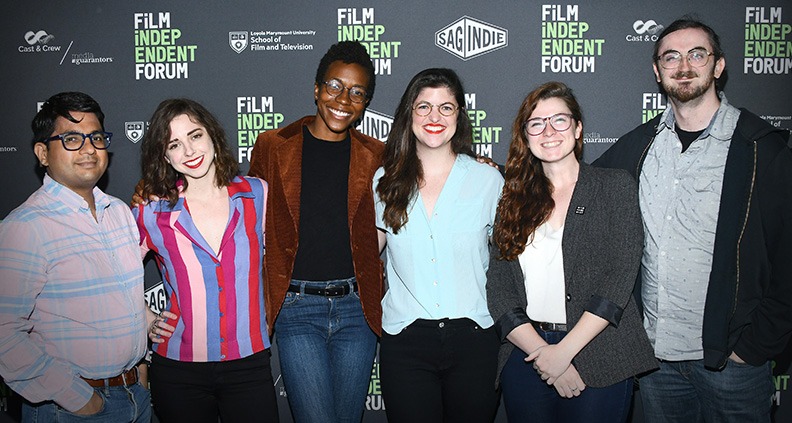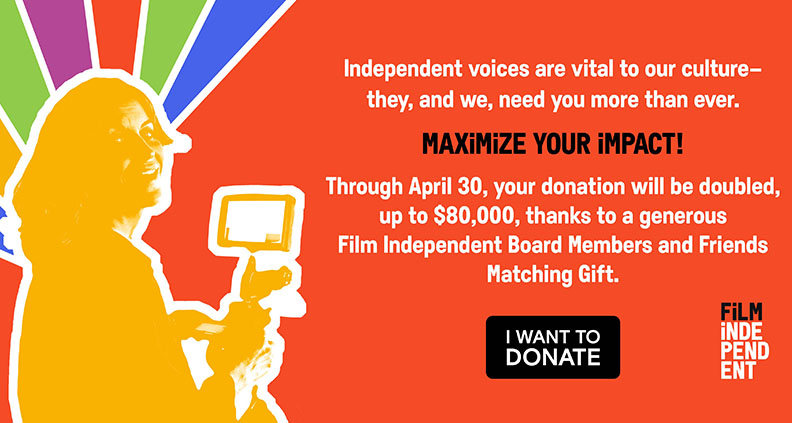WATCH NOW: Narrative Podcasts Offer a New Venue for Creative Storytelling
Note: the following originally ran as part of our coverage of the 2019 Film Independent Forum.
***
Ever since talkies took Hollywood by storm in the early 1930s, sound has been an integral part of the movies. In fact, formally sophisticated (or at least budget-conscious) filmmakers often try telling stories using only sound, letting the camera linger on some innocuous detail of a scene while the sound design tells us all that we need to know about what’s happening. Extrapolate that idea even further and you have the world of narrative podcasts—stories told solely through the intricate and ingenious use of audio, utilizing a variety of techniques to create gripping narratives across a variety of genres.
These podcasts aren’t fact-based works of investigative journalism or free-form conversations between simpatico comedians. They’re tightly scripted, performed pieces of original fictional storytelling conceived of by actual writers, often—though not always—hailing from film and TV backgrounds. Such projects were the subject of the Film Independent Forum panel “Podcasts: Picturing Stories Through Sound” on April 28 at LMU’s new Playa Vista campus at #FiForum19.
Moderated by Mischa Stanton of The Whisperforge—one of the podcasting’s most in-demand sound artists—the panel included writers, performers and podcast creators Eli Barraza (The Far Meridian), Ivuoma Okoro (Vega), Colleen Scriven (Lesser Gods) and Lauren Shippen (The Bright Sessions) as well as Bikram Chatterji, Managing Director of podcast network Maximum Fun, speaking on behalf of MaxFun’s recent debut into the narrative space, Bubble.
PODCASTS: STORIES AND SOUND
Adapting to a new medium. “What is the difference between a visual medium and a non-visual medium?” asked Stanton, continuing: “What skills did you take into it from your previous experience, and what did you actively leave behind?” Said Barraza: “I had to work extra hard on exposition and dialogue,” admitting that she had to learn to allow herself more latitude to convey expositional information via dialogue when podcasting—a fact running counter to her “show don’t tell” indoctrination as a screenwriting student. “Figuring out really creative ways to get it [exposition] out… has been interesting,” she said.
The wrong way? The “write” way? Maximum Fun’s Bubble, created by Jordan Morris, had originally been written as a TV pilot, with the action lines re-imagined for podcasting as running narration. “The way Jordan dealt with it was by making his stage description incredibly charming and descriptive and fun,” said Chatterji, acknowledging that some audio storytelling purists have criticized the decision. Said Stanton: “I’ve encountered people trying to gate-keep what is proper audio storytelling. But we’re all still trying to figure it out. If someone tells you you’re not telling the story the right way, nobody actually knows.”
Building an audience. The good news? Though a comparatively new medium—at least in its current online form—audio storytelling has already developed a passionate base of devotees. But where can you find them? “For all of The Bright Sessions’ run, we never spent any money on marketing,” said Shippen, adding: “It was really Tumblr and Reddit that were the places back in 2015 and early 2016 where people into audio fiction were hanging out.” Though, she noted: “Over the past couple of years I’ve noticed a shift from Tumblr to Twitter.”
Don’t be afraid to try things… or to fail. “Because I always thought of my show as an audiobook—and because my cast is still myself and my roommates—we do a lot of voices, modeled sort of in the way of an audiobook,” said Scriven, (who had originally studied screenwriting) of Lesser Gods’ approach to audio storytelling. “There has been such a learning curve, but what I’ve been amazed by is you can figure it out, just give yourself the space to fail.”
To narrate, or not to narrate? “One thing that’s cool about having a narrator is that you still can frame,” said Okoro. “You can still direct a person’s eye to what it is you want them to see.” She described a scene in the pilot episode of Vega, wherein the main characters’ faces are described as “inches away”—a use of language that suggests a tight two-shot in the audience’s imagination. Shippen’s approach is different. “I’ve never used narration at all in any of my shows,” she said, adding: “I really like relying on the way an actor is delivering a line—or silence. Silence is such a huge thing. If there’s a meaningful look between two characters, we try to build that silence into the script.”
Maximize aural verisimilitude. For shows eschewing narration, Stanton recommends using creative audio set-ups to help convey information—for example: actually recording actors sitting on a mattress for a scene between characters lying in bed. According to Shippen, on episode 17 of The Bright Sessions, “Mischa came onboard, and it opened up my sandbox of what I could do, because they’re actually a sound designer.” Another pro-tip? If a character is supposed to be running out of breath, record the actor running in place.
Inclusion! Of podcasting’s relative lack of gatekeepers—at least compared to other media—Stanton said: “A lot of writers of color are getting their stories out there, a lot of LGBTQ+ are getting their stories out; a lot of marginalized communities are getting the opportunity to tell their own stories.” They asked: “How can we continue that work?” Scriven, for one, recalled an instance when Shippen had actually shared an interview opportunity with Scriven and a few other female podcasters. And for The Far Meridian’s second season, Barraza made a conscious effort to cast more roles with actors of color.
Evolving beyond audio? Several of the creators on the panel said that they were, in fact, developing their projects for other medium—while continuing to focus primarily on growing their shows within the world of podcasting. But the opportunities to adapt these stories beyond audio are there. Said Chatterji: The fact that something matters so much to a community of people that they spend their time drawing their imagination of the characters, that is compelling to anyone on the business side of a business endeavor… If something is speaking to people on that level, there’s value there that someone else may not understand.”

The 2019 Film Independent Forum took place April 26-28, 2019 at the new LMU Playa Vista campus in Silicon Beach—click here to see what else happened, and don’t forget to come back next year! The 2019 Film Independent Forum was supported by Premier Sponsors SAGindie, Cast & Crew and University Partner Loyola Marymount University School of Film and Television.
Film Independent promotes unique independent voices by helping filmmakers create and advance new work. If you want to help support us and all that we do to help support visual storytellers worldwide, now’s the time.
For a limited time through April 30, all donations received will be doubled, up to $80,000, thanks to a generous Film Independent Board Members and Friends Matching Gift. Become a Member of Film Independent here.
Keep up with Film Independent…
(Header: Vega promo image)
